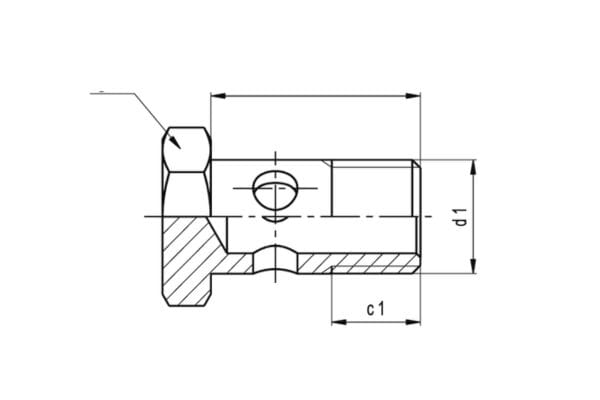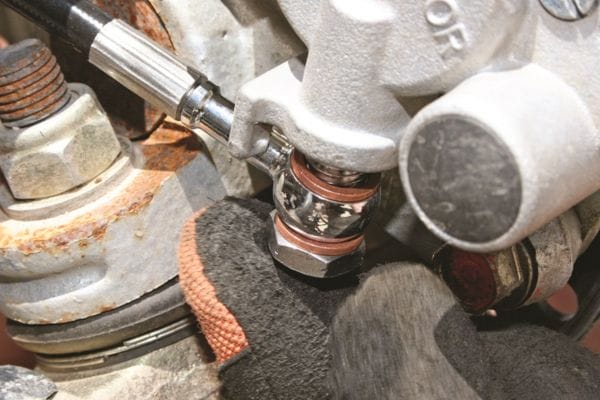Did you know that banjo connectors are pivotal in hydraulic systems, with their unique design enabling secure and efficient fluid transfer even in the most demanding environments? Understanding the banjo connector standard is crucial for professionals across various industries, from automotive to aerospace, as it ensures compatibility, safety, and optimal performance. In this post, we will delve into the key features and specifications of the banjo connector standard, providing you with essential insights to enhance your knowledge and application of these vital components in your projects.

A banjo connector, also known as a banjo fitting, is a type of fluid transfer connector commonly used in hydraulic and fuel systems. Its distinctive design features a hollow bolt with a spherical shape, reminiscent of a banjo, which is where it gets its name. The banjo bolt is typically accompanied by a perforated, ring-shaped fitting that allows fluid to pass through the center of the bolt and exit through the fitting. This unique configuration enables the connector to facilitate high-pressure fluid transfer while allowing for a 360-degree rotation of the fitting, providing flexibility in the installation process.
The development of banjo connectors can be traced back to the early 20th century, coinciding with advancements in hydraulic and automotive technologies. Initially used in automotive braking systems, the banjo connector’s ability to handle high-pressure fluids efficiently made it an ideal choice for critical applications where reliability and safety were paramount. Over the decades, the design and materials used in banjo connectors have evolved, incorporating advancements in metallurgy and manufacturing techniques to enhance their performance and durability. Today, banjo connectors are standardized by international organizations, ensuring consistent quality and compatibility across various applications.
Banjo connectors are widely used in several industries due to their versatility and reliability. Some of the common applications include:
Several key organizations are responsible for setting and maintaining standards for banjo connectors, ensuring their consistent quality and compatibility across different applications. The International Organization for Standardization (ISO) is one of the most prominent bodies, developing globally recognized standards for a wide range of industrial components, including banjo connectors. The Society of Automotive Engineers (SAE) is another significant organization, particularly influential in the automotive industry, where it sets precise specifications for hydraulic fittings and connectors. Additionally, the Deutsches Institut für Normung (DIN) provides important standards for these connectors, especially in Europe, contributing to the global harmonization of product specifications.
International Standards (ISO)
ISO 8434-4
This standard specifies requirements for 24° cone connectors with O-ring face seals, which include banjo-style designs.
ISO 9974
Tailored for diesel engine and automotive fuel systems, this standard focuses on metric screw thread connections with elastomeric sealing. Banjo fittings under this standard are typically used for oil and fuel applications where compact routing and leak prevention are critical.
ISO 6149
ISO 6149 defines the dimensions and sealing requirements for ports and stud ends with metric threads and O-ring sealing.
European Standards (DIN)
DIN 7642
One of the most frequently referenced standards for banjo fittings in hydraulic and pneumatic systems. It specifies dimensional and design requirements for banjo connectors and bolts, including sealing methods such as copper or aluminum washers.
DIN 3865
This standard relates to tube fittings that include welded cone ends and banjo structures.
DIN 74324
Focuses on plastic tubing systems, this standard includes guidelines for connecting plastic tubes to banjo fittings, especially in automotive braking systems and fuel lines.
American Standards (SAE)
SAE J512
While this standard focuses on compression fittings for automotive applications, it also includes certain banjo-type configurations used in fuel and brake systems.
SAE J1231
This standard governs hose fittings for automotive fuel and emission systems, including hose barb and banjo variants.

Banjo connectors must adhere to various types of standards, each addressing specific aspects of their design, manufacture, and performance. These include:
Standards play a crucial role in the manufacturing and application of banjo connectors by providing a benchmark for quality and performance. They ensure compatibility, meaning connectors from different manufacturers can be used interchangeably without compromising the integrity of the system. This interoperability is vital for industries that rely on a wide range of components sourced from various suppliers.
Moreover, standards enhance safety by setting minimum requirements for materials, design, and performance. By adhering to these standards, manufacturers can reduce the risk of component failure, which could lead to system malfunctions, accidents, or costly downtime. Standards also help in maintaining consistent performance across different
Banjo connectors are characterized by their unique design, which includes a hollow bolt with a spherical, banjo-like shape. This bolt features a fluid passage through its center, allowing liquid to flow through and out via a perforated, ring-shaped fitting. The design typically involves precise dimensions to ensure compatibility and ease of installation. Standard sizes range from small-diameter fittings used in precision instruments to larger ones used in industrial applications. The materials used for banjo connectors are chosen based on the specific requirements of the application, with common choices including stainless steel, brass, and aluminum. Stainless steel is favored for its corrosion resistance and strength, brass for its excellent machinability and durability, and aluminum for its lightweight properties and good corrosion resistance. Each material offers distinct advantages, ensuring that banjo connectors can meet the diverse needs of various industries.

The integrity of a banjo connector’s seal is crucial for preventing leaks and ensuring efficient fluid transfer. Several types of seals are used in banjo connectors, each offering unique benefits:
Banjo connectors are designed to handle a wide range of pressure ratings, making them suitable for various high-pressure applications. The pressure rating of a banjo connector indicates the maximum pressure the connector can withstand without failing or leaking. These ratings are typically expressed in pounds per square inch (PSI) or bar (1 bar = 14.5 PSI).
Banjo connectors must operate effectively under a wide range of temperatures, depending on the specific application. The temperature tolerance of a banjo connector is determined by the materials used in its construction and the type of seals employed.
Banjo connectors are manufactured from a variety of materials, each chosen to meet specific performance requirements based on the application:
Banjo connectors are manufactured according to strict dimensional standards to ensure compatibility and interchangeability across different systems and components. These standards specify the precise dimensions of the connectors, including:
Banjo connectors come with various thread types and sizes to suit different applications and regional standards. The thread specifications are crucial for ensuring a secure and leak-proof connection. Common thread types include:

The design of banjo connectors significantly impacts fluid flow rates and overall system efficiency. Key design features influencing these factors include:
In summary, the specifications of banjo connectors, including material choices, dimensional standards, thread types, and design features for optimal flow rates, ensure that these components meet the diverse needs of various high-pressure fluid transfer applications.
In summary, banjo connectors are essential components in high-pressure fluid transfer systems, with key features including robust design, various sealing options, high-pressure ratings, and wide temperature tolerance. Adhering to standards set by organizations like ISO and SAE ensures compatibility, safety, and optimal performance. Understanding these specifications is crucial for selecting the right connector for your application. Share this post, send us your comments, or reach out to us for more information or services related to banjo connectors. Your feedback and inquiries are always welcome!
A banjo connector is a type of fluid transfer fitting used in hydraulic and fuel systems, featuring a hollow bolt and a spherical fitting that allows for high-pressure fluid flow.
Common materials include stainless steel, brass, and aluminum, each chosen for their specific advantages such as corrosion resistance, strength, and lightweight properties.
Banjo connectors are used in various industries including automotive, aerospace, marine, and medical devices, particularly in hydraulic and fuel systems.
Banjo connectors can handle a wide range of pressures, typically from low pressures up to 3000 PSI or more, depending on the application and material.
Banjo connectors come with various thread types such as metric (ISO), unified (UNC/UNF), British Standard Pipe (BSP), and JIC, catering to different regional and application standards.
Standards ensure compatibility, safety, and performance by providing consistent specifications for size, material, and pressure ratings, facilitating reliable and efficient fluid transfer in various applications.